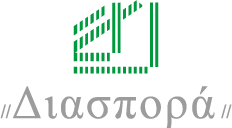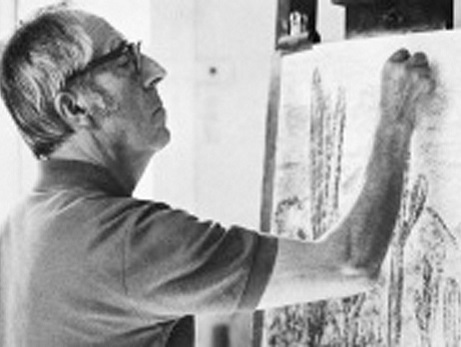Biography
Theo Hios was born in 1908 in Tripi, a little town in Greece just outside of Sparta, and came to the United States when he was twenty-one. The Depression had begun, but he managed to get a job in a restaurant and worked fifteen hours a day, seven days a week. When President Franklin D. Roosevelt's labor reforms were enacted, the legal workweek was reduced to six days a week, ten hours a day, giving Hios a little free time.
“I went to the museums. I went as much as I could. I went all the time. Why? Because I enjoy looking at things. History was my favorite subject in school, and through art I could go back to any age-to the Chinese, the Egyptians, the Greeks … I was looking to fill a certain emptiness in me-you were working, and you make a few dollars. So what?“
In 1936, he decided to become an artist and went on public relief, joining the W.PA. Federal Arts and Easel Painting Project. For the first time, he met other artists and was able to go regularly to art school and paint from the model. He did his own painting in off-hours. The only other Greek American artist he knew was George Constant, but when Italy invaded Greece in 1940 and Greek War Relief was organized, all the Greek American artists in New York got together –“Constant, Vassos, Lekakis, Daphnis, everyone. We decided to have an exhibition and auction sale, and I went personally to eighty or eighty-five non-Greek artists, and I asked them all to donate works for the auction, and I tell you they all gave except three. I had paintings that today are worth ten, fifteen thousand dollars“.
During World War II, Hios joined the U.S. Marine Corps. He was a combat photographer and received the Bronze Star for service in the Pacific. He also taught the first painting classes ever offered by the Marines and organized traveling exhibitions of their work. After the war, he studied in New York at the Art Students League and the American Artists School, and moved to the Chelsea district in Manhattan. Around this time he met and married Catherine Lekakis, a dancer, painter, and ceramist who is one of Michael Lekakis's sisters; another sister, Calliroe (also a dancer), became the second wife of George Constant.
From the 1930s to the '50s, Hios's work was figurative. He moved toward abstraction in the 1960s, painting crimson ovals in gold frames that bring to mind Greek Easter eggs, although he once said that they were simplified shapes of rocks in Greek and New England landscapes. Around 1971 he began working with circles and ellipses painted on round canvases that can be turned like color wheels3 or on rectangular canvases. Hios died in New York City in January 1999.
“I never thought I would be an artist, because in Sparta there were no artists. The only thing you could do was make icons for the churches. Who [in Sparta] ever heard of an artist?“
Theo Hios’ biography is sourced from the catalogue of the exhibition Modern odysseys: Greek American artists of the 20th century (Selz, Peter, and William R. Valerio. 1999. Queens, N.Y.: Queens Museum of Art.)



